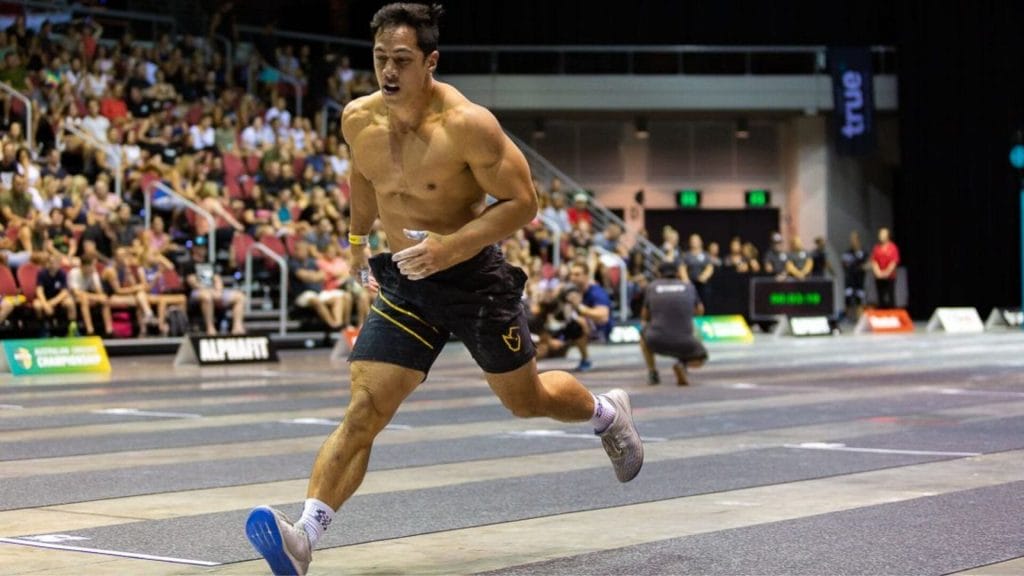As CrossFit coaches, we often emphasize the physical aspects of preparation: technique, strength, and endurance. Yet, an area frequently overlooked is the mental game. It’s the backbone of every successful athlete’s journey, including those competing in the CrossFit Open. Drawing from my years of coaching and competition experience, I’ve seen firsthand how mental skills techniques can dramatically improve performance.
I have absolute conviction that the best athletes aren’t the fittest or strongest, they’re the most mentally tough.
I spent over a decade refining my mental skills. I had the good fortune of having the Sports Psychologist for the NZ Warriors as a lecturer when I was in University, and have worked with the Mental Skills for the Hurricanes rugby team.
For all the physical training I did, none of would have mattered if I didn’t work on my mental skills.
Visualization
Imagine yourself executing a perfect snatch or powering through those last few box jumps. This isn’t just daydreaming; it’s a critical strategy called visualization. By mentally rehearsing your movements, you prime your body to perform them in reality. Start by visualizing your workout, focusing on the feeling of each movement, the environment, and the satisfaction of completing your workout.
This is a technique used by elite athletes and Olympians around the world. They are able to rehearse an entire race with vivid detail, imagining the way their bodies move, the feeling of the wind, the sound of the crowd, and the result they want to achieve. It takes practice, but over time you will be able to create a clear picture of your entire workout and how it will play out before the timer even starts.
Bob Bowman, the swim coach of Michael Phelps said this about his athlete: “It has to be rehearsed many, many times, by the time Michael gets up on the blocks to swim in the World Championships or Olympics, he’s swum that race hundreds of times in his mind before he gets up there.”
Pacing
Pacing is an often underestimated but critical skill in CrossFit, especially during the Open. It’s about more than just managing your energy; it’s a strategic approach to every workout. Successful athletes know the importance of mapping out exact paces for each movement and each round, creating a game plan that maximizes efficiency while preventing redlining too early.
Try this in your next workout:
- Grab a whiteboard and pen, or use the Notes app on your phone.
- Write down a number for each round in the workout (or for each movement if it’s a chipper).
- Next to each number write the time you want to finish the last rep of that round.
- During the workout, stick to the plan and use the times you have written down as checkpoints for how your pacing is going.
- After the workout assess whether it was too aggressive, too conservative, or just right.
- Rinse & repeat for each workout and get better at knowing where your threshold is.
This involves a deep understanding of your capabilities and the demands of each workout. However, equally important is the ability to adapt. No plan survives contact with the enemy, as they say, and in the heat of competition, the ability to recognize when a strategy isn’t working and pivot accordingly is what separates the good from the great. Over time you will get a better understanding of what paces you can hold and how it affects your performance.
Self-talk
The dialogue we have with ourselves in the heat of competition can make or break our performance. Negative self-talk can spiral into self-doubt and loss of focus. Cultivating a positive internal narrative is crucial. You can take this a step further and attach greater meaning to your self-talk by linking it to your “why”.
Why is it important that you push through the discomfort and keep going?
For some people it’s about proving themselves, for others it’s the sacrifices they’ve made. Whatever it is for you, use that as a reminder when you find yourself deep in the pain cave.
This shift doesn’t happen overnight. It requires practice and awareness, both in and out of the gym. The best tip I ever had was to speak to yourself the way you would speak to a friend or another member at the gym, the dialogue ends up being much kinder and more positive.
Mindfulness and Focus
In the chaos of competition, a calm mind is your greatest asset. Techniques like focused breathing and mindfulness can help manage stress and sharpen your focus. This was perhaps one of the greatest takeaways I had from my Mental Skill Coach when I was competing at an elite level. He would always remind me to “Stay In The Moment”.
It is easy to get caught up in “the race” during a workout. But if you’ve visualized the result, planned your paces, and have a strong connection to your ‘Why’, the last step is to stay focussed on the task in front of you.
“If you are depressed you are living in the past. If you are anxious you are living in the future. If you are at peace you are living in the present.”
Lao Tzu
If you don’t already, start meditating. I’m not a big fan of “Meditation” but the act of sitting still and being present in the moment is exactly what will help you stay calm when you’re in the heat of competition.
This is training. And it’s just as important as your 5×5 Back Squats and Muscle Up progressions.
Do the Work
The key is this: You must work on your mental skills just as much as you work on physical ones. Most of the time these go hand in hand.
Without these four strategies, you’re at risk of being a great athlete who cracks under pressure.
To get help DM me on Facebook or join us at Instinct Fitness and get around people that do this every day.

